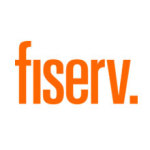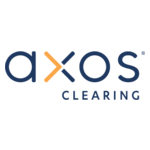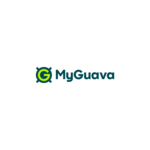Automation in US banking – part 1
Art Gillis, a seasoned banking technology consultant (working in the computer industry since 1958 – and listed as a top 25 tech consultant by the American Banker) and author, presents his latest “Automation in Banking” report (#31!), which looks at the US core banking and ancillary software market.
I am pleased to report the state of technology in banking because this is about what is, not what might be in the future. Therefore, the reader should know early on that the report covers the year 2015, not 2016.
I’m not so pleased that the last positive edition of this report reflected the beginning of a downward trend in the successes of the banking technology business, and it continues.
In 2005, 755 financial institutions acquired a new core system. Now, the norm is 218.
It’s difficult to be positive when the numbers are going down, even though words of many others are claiming a robust future.
This report is about core applications as well as ancillary applications. Core includes four pieces:
1) all deposit applications;
2) all loan applications;
3) financial data related to the bank (general ledger and financial statement rendering);
4) customer database (now a popular IT solution referred to as KYC by the regulatory agencies).
There are 26 categories of ancillaries (but hundreds of brands). Put these categories together, with hopefully an integrated infrastructure, and you are ready to process transactions, thousands per day or billions per day.
To say that “Automation in Banking 2016” is like no other report ever published would be a lie. I do not read other reports, but I know what was included in the 31 editions of the reports that I produced. There’s a huge difference between #1 and #31, but in the past ten years, the differences were in the details. 83 exhibits, 55 vendor profiles and over 300 IT solution profiles provide the details.
- Five companies still occupy the space known as top core vendors: FIS, Fiserv, Jack Henry, D+H Corporation (soon to merge with Misys) and Computer Services Inc (CSI).
These companies got their label in the 1960s because core was all there was. They now offer core plus ancillaries.
If you’re looking for a sixth top core vendor, you won’t find it. But there are nine other companies in the US that do what the five do, but with much smaller numbers. Don’t worry about their survival. FIS doesn’t want them. Fiserv and Jack Henry don’t need them. And D+H has just been bought by a private equity firm. CSI is happy where it is. I don’t believe the nine are looking for an acquirer.
- Offshore core companies have been looking at the US market, for several years, but with little or no success.
There are five – Infosys Finacle, SAP, Temenos, Oracle FSS and Misys (which is to merge with D+H) – that can afford to be interested in the US, but there are also new offshore entries appearing that just want to take care of their own backyards.
In my opinion, the only segment of the industry that offshores should play in is the top tier. If a small US bank were to acquire an offshore core solution, the rude awakening would occur the first time the bank dialed 1-800. No company provides service like FIS, Fiserv, Jack Henry and CSI.
- There’s too much buzz about banking and how technology is going to solve the industry’s weaknesses.
And make no mistake, banks are still weak even nine years after the 2008 crisis.
The buzz is better known as digital banking, blockchain/Bitcoin, cloud, disruptors, big data, artificial intelligence (AI), start-ups, and millennials.
What banks need most right now is a new breed of CEOs to develop a strategy with their customers to promote the greater use of technology.
For now, the buzz is mostly about intent. I’ll wait until I see availability, delivery and performance in the minds and hearts of bank customers before I show reality in a future edition of “Automation in Banking”.
- Each year, there is a consistent reduction in the number of financial institutions of 4.2%.
In recent years there has been paltry evidence of new banks. In 2015, there were only five greenfield banks.
20 years ago, bankers were predicting an industry with numbers like 2,000. Their timing was off but the number might be correct. The top tier banks are getting bigger, and there are more of them. The small banks are losing ground because they cannot afford the over-regulation. If the mid-tier banks continue to do a good job, they will be acquired.
- In recent years, IT outsourcing has become the preferred choice of bankers.
“Preferred” is important. Small banks have realised that they cannot keep up with and manage technology efficiently, so 60% of them now rely on their core processor for outsourcing. Trend-wise (new core sales in 2015), 75% are switching to outsource.
The story changes with mid-tier. Those banks (56%) want their own system because they believe they can manage it better than a third party. The big boys love in-house because it provides bragging rights. At the present time, 85% do their own thing, and they have the money to pay for it.
- This report does not evaluate banking technology vendors.
The report displays vendor performance based on their accomplishments. Bankers and investors have to use those accomplishments to determine what’s right for them. Here is just one of 800 accomplishments – strength of vendor current sales:
- Fiserv sold 41% of all new core deals in 2015
- Jack Henry – 22%
- Nine small companies – 23%
- CSI – 8%
- D+H – 3%
- FIS – 2%
However, the picture can change significantly when one examines the other 799 accomplishments.
- In 2015, the top five core vendors had combined revenue of $14.2 billion.
The biggest change to that figure in 2016 will be the acquisition of Sungard by FIS, not organic growth. I do not see much organic growth for the top five going forward. The main reason is their customers already have the technologies they need. And regardless of the buzz in the press, there are no new IT products for the top five that I can see. The last one was mobile banking.
- Please remember, it’s numbers that dictate success.
So with that in mind, here are the vendors that reported revenue and produced the best increases, year over year:
- Cardronics – 14%
- TSYS – 17%
- ACI Worldwide – 17%
- Vanity – 23%
- Q2 – 32% increase in revenue
- If market share were determined by number of core customers, here is the lineup:
- Fiserv 37%
- Jack Henry 17%
- FIS 15%
- D+H 7%
- CSI 3%
- All others 21%
- The debate about legacy vs. open core continues. But evidence is clear. Some banks are switching, and they are switching from legacy to legacy.
Example: Umpqua Bank switched from a very good legacy to another vendor’s very good legacy. Explain that when all the buzz is about open architectures. Umpqua Bank has a strong reputation and track record. CEO Ray Davis is no dummy. Only insiders know the reason that Umpqua stuck with legacy. A more meaningful question is why didn’t the bank follow conventional wisdom (and the pundits) and switch to a modern architecture core system?
- Acquisitions among the vendors in this report were the fewest in the past 24 years, only six.
That means three things:
1) the pool of worthy candidates has diminished;
2) the top five core providers have every product they need;
3) the top five reported revenue growth that was all organic.
They didn’t get any of it by acquiring companies. There are some strong best-of-breeds enjoying robust harvests, but acquirers learned how to acquire early before the marrow was sucked out of the bone.
- Regarding revenue, the pureness of revenue, earned not bought, tells a strong story.
Banking technology has become a steady, mature industry reporting nice revenue increases (3.5% for the group) that protect earnings, but certainly not the rage as the buzz might suggest.
For the past four decades, bankers would ask me, as I collected my final payment: “tell us when we are done”. I answered with: “Never.” I might have been wrong. It looks like 2015 was close to, “we’re done here”.
- When the first Martian delegation drops in on Earth, their leader will say: “Nanoo nanoo, wiki eeky al po ka na tee moov it.”
Which means “Take us to your top 5 so we can understand what digital banking really is.” The Martians will realise and respond: “Para vi va tara nu nu.” Which means, “Been there done that.” I have it on good authority that Martians do not use labels to exploit new ideas.
Digital banking is just a label, nothing new for banking technology. In simple language it means a fully integrated suite of automated solutions covering everything consumers and businesses need to release bank employees from doing grunt work and convert the expense of buildings as the delivery conduit to a customised device that can now best be used for real-time delivery anywhere anytime.
The top five can deliver it now, but bankers are not deploying fast enough. Thus the top five will see little revenue gains from something called digital banking. No vendor in this report is offering a solution under that name.
The story continues in part 2 of the report – click here to read it.











































